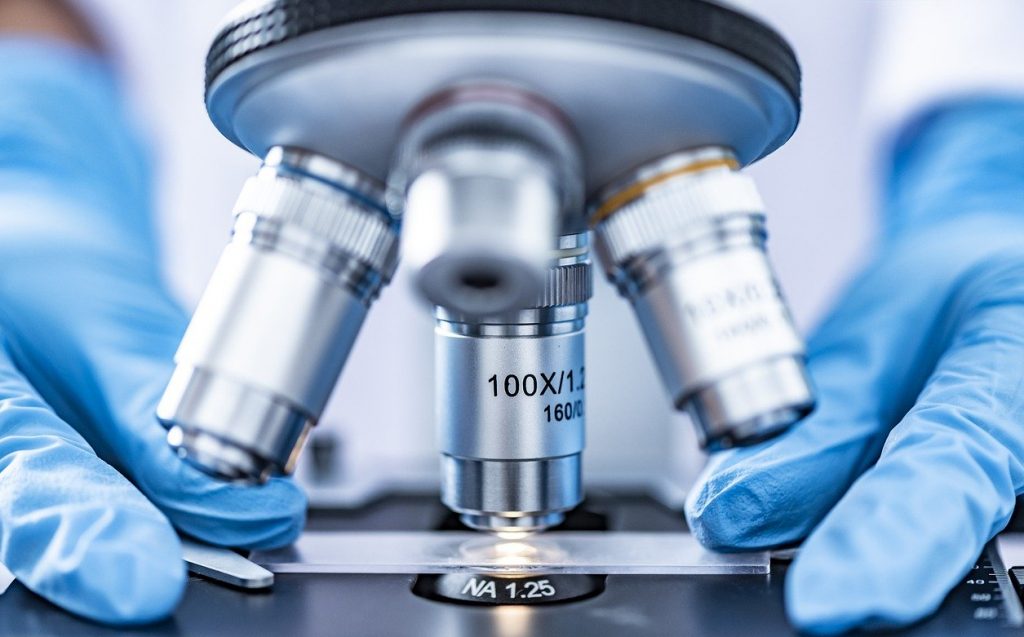It is well known that more men are diagnosed with MND than women. It is not altogether clear exactly why this is the case and what different biology might be driving this. Perhaps this needs to be considered when researching MND. For example, should we take this into account when looking down the lens of the microscope? Perhaps even cells grown in a dish show difference based on whether they originate from males or females with MND. A recent paper suggests that these differences do exist in cells and that up to now this hasn’t been taken into account when motor neurones are grown in labs to study MND.
What are induced Pluripotent Stem Cells (iPSCs)?
Cell models are a popular research method for studying the underlying biology of MND and most of the models use induced Pluripotent Stem Cells (iPSCs). iPSCs are cells created from tissue obtained from people and treated to allow them to have the ability to change into other cell types in the human body. In the case of MND, a skin or blood sample is obtained from a person with MND, and a type of cell known as a fibroblast is extracted. A cocktail of factors are then added to the fibroblasts to encourage them to change into iPSCs. The cells can then be changed into motor neurones when needed.

Using iPSCs allows researchers to study changes in motor neurones that occur in MND and to understand the mechanisms that underpin the disease. Pre-clinical testing of potential treatments can also be done using cells to observe the effects they may have and whether they can help to correct the changes in motor neurones in MND.
A new study into iPSCs and MND
Researchers from California took a deep dive to look into whether there were differences seen in the cells grown from samples from men and women. The researchers generated iPSCs from individuals with MND and those without (controls) and used these to create motor neurones. They wanted to see if we should consider the potential for differences that might be seen in lab grown cells because of the many differences that exist between people.
To investigate this, the researchers made use of an existing collection of iPSCs gathered from people with MND. These iPSCs came from Answer ALS, an American group that gathers biological samples, clinical and genetic information from people with MND. The researchers used iPSCs from 433 people (341 people with MND and 92 healthy controls) to create motor neurones to study. They looked at gene activity patterns within these cells to investigate whether genetic differences could be observed both between the sexes and also between people with MND and people without the disease.

RELATED TOPIC
Blog | 28 June 2016
Using iPSCs to understand why motor neurones lose their normal function in MND
What did the study find?
The study found that the motor neurones made from iPSCs had significant differences depending on the origin of the cells. The major differences found in this study were due to differences between the male and female MND iPSCs used to create the neurones.
The results indicated that iPSC-derived motor neurones have strong gender-specific gene expression patterns. Separating the male and female cells showed that motor neurones made from males with MND had higher activity of two different genes. These genes, called TUBB3 and NKX6-1, are thought to play essential roles in the generation of new motor neurones. This finding suggests that sex is a significant source of variability that need to be carefully controlled for in future studies.
The researchers then looked to see if this sex effect was also observed in human tissue. To do this they looked at gene data that had been collected from human tissue samples from people with MND. This data came from both a previous study and the New York Genome Center. In data collected from brain samples and post-mortem spinal cord samples, there was a clear separation of samples based on biological sex. This means that the researchers could confirm that the differences they found in gene expression are not an effect of the method used to create motor neurones from iPSCs.
Interestingly, the researchers did not find a large difference in gene activity between MND and control samples when looking at all samples or female samples only. However, when looking at only male MND and control samples, the researchers found that the activity of 132 genes decreased, and 220 genes increased in MND. The genes that showed decreased activity weren’t found to be linked to a significant biological pathway within the neurones, but the genes which increased in activity were related to inflammatory pathways in the cells. Inflammation is known to be promoted in MND, therefore this increased activity of genes involved in inflammatory pathways could potentially help to explain why this is the case in males with MND.
Gene expression in male derived and female derived samples were found to differ. A gene called APOE, which is involved in fat transportation in the bloodstream, and a gene called DCX, which is associated with neuronal activity, were both elevated in female samples. While genes related to the cytoskeleton, the framework inside cells that aid in structural integrity, such as NEFM and DES were found to be expressed to a higher degree in male samples than female samples. The researchers were unable to explore the role these differences in gene expression between the sexes may play in the development of MND in this study. Further research will need to be done to investigate this.
What are the next steps for this research?
The biggest findings from the study were the differences seen between cells made from male and female samples. Further investigations will need to be conducted to fully understand the how these differences may impact MND development and progression between the sexes. Understanding more about these differences may help us to better understand the disease mechanisms at play and provide more insights for the development of potential therapeutics for people with MND.
The findings from this research may mean that future MND studies will need to take into account the sources of iPSCs to make sure both biological sexes are represented in order to fully capture the complex relationship between biological sex-based gene activity and MND.






